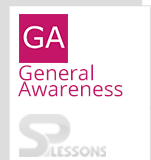 Introduction
Introduction
Economy is a very important subject for Railway Recruitment exams and UPSC Exams. All these questions are easily understandable format. SSC CPO Economy Quiz 1 is very useful to crack several competetive exams. Candidates can check the daily updates on SSC Official Website.
 Samples
Samples
1. The implementation of which among the following programmes is/ was based upon
-
A. National Rural Employment Guarantee Act
B. Sampoorna Grameen Rozgar Yojna
C. Swarna Jayanti Gram Swarozgar Yojna
D. National Food for Work Programme
-
A. Capital Expansion
B. Credit Expansion
C. Credit Control
D. Credit Creation
-
A. Increase Interest Rates
B. Decrease Interest Rates
C. Purchase Government Bonds
D. Decrease Statutory Liquidity Ratio
-
A. Road
B. Rail
C. Water
D. Pipe line
-
A. Bimal Jalan
B. K Subba Rao
C. C Rangrajan
D. Amartya Sen
6. A Maharatna company can invest up to which among the following amounts in a project independently?
-
A. Rs. 1000 Crore
B. Rs. 5000 Crore
C. Rs. 10000 Crore
D. Rs. 15000 Crore
-
A. Usha Thorat
B. Deepak Mohanty
C. G.Gopalakrishna
D. N. Sadasivan
-
A. Edward C Prescot
B. Amartya Sen
C. Edmund S Phelps
D. Paul Krugman
-
A. Foreign Exchange Management Act, 1999 (FEMA)
B. Prevention of Money Laundering Act, 2002 (PMLA)
C. Direct Taxes Code Bill
D. Income tax Act 1961
-
A. Ministry of External Affairs
B. Ministry of Finance
C. Ministry of Overseas Indians
D. RBI
11. The enactment of COFEPOSA was done in 1974 for which among the following purposes?
-
A. To enable the state authorities for preventive detention
B. To curb the smuggling and conserve foreign currency
C. To stop the financing of terrorist activities
D. Maintenance of Internal Security
-
A. 1947
B. 1950
C. 1952
D. 1954
-
A. Bank of America
B. Standard Chartered Bank
C. CitiBank
D. ANZ Grindlays Bank
-
A. Prime Minister
B. Minister of Commerce
C. Finance Minister
D. Finance Secretary
-
A. Prime Minister
B. Minister of Commerce
C. Finance Minister
D. Finance Secretary



